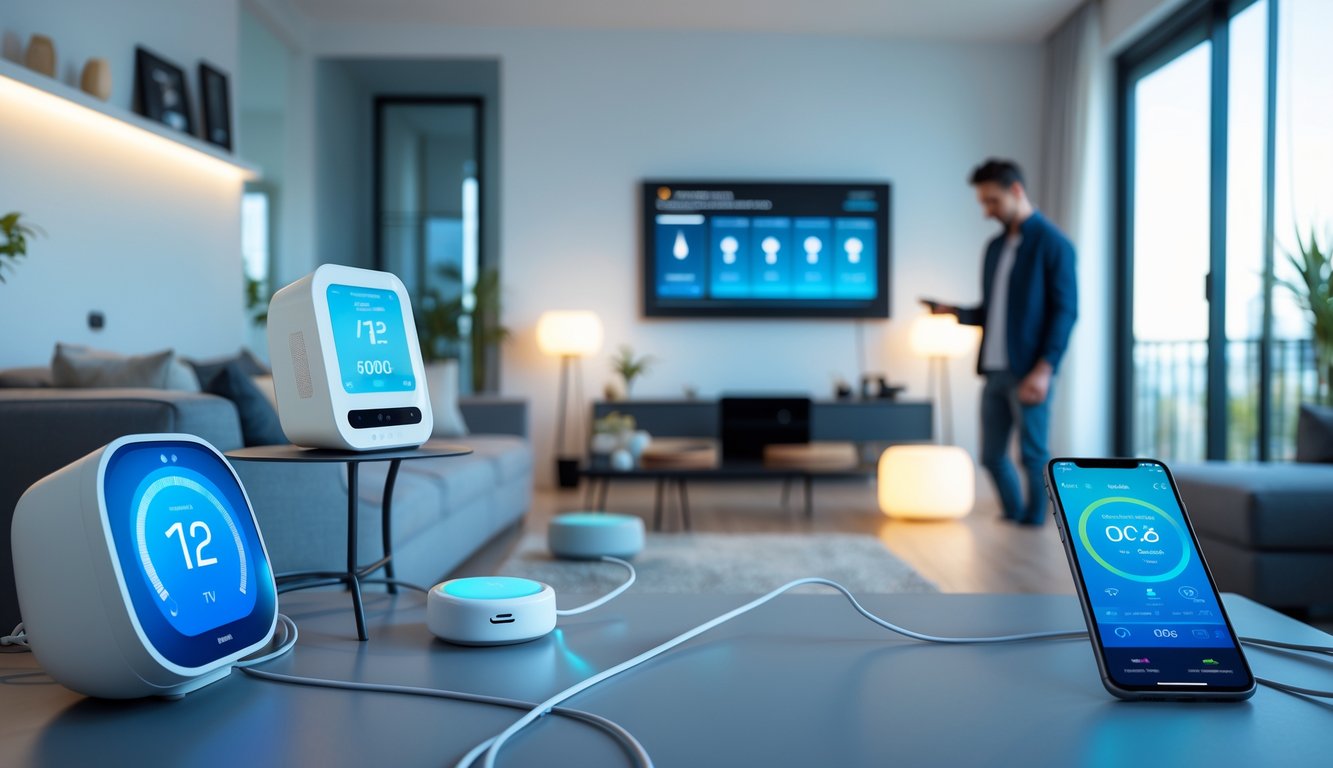
Reducing Your Home’s Carbon Footprint with Smart Devices
Carbon emissions—can’t pretend it’s not a thing. I’m always fiddling with my phone, pretending to be eco-friendly, but somehow my numbers keep creeping up. My thermostat has a mind of its own, and my smart plugs are apparently partying at 3am. Balancing convenience and actually shrinking your carbon footprint? Feels impossible.
Eco-Friendly Home Automation Choices
Automatic blinds sound cool, right? Until they buzz for no reason when they’re not even moving. I swapped out my old plug-in air fresheners for a Google Nest Learning Thermostat and LIFX LED bulbs, mostly because I read somewhere that “Energy Star-certified smart plugs can cut standby by 40%” (thanks, Energy Saving Trust—read more).
Don’t get too excited, though. Just because it says “smart” doesn’t mean it’s green. My smart fridge once updated itself at 2am and started using more power than my microwave. Wired had a piece where an energy auditor flat-out said, “Automation doesn’t always mean savings—devices are always drawing something.” Now I keep a spreadsheet to track which gadgets are actually helping and which ones are just secretly guzzling power. My toaster? Not smart, not interested.
Tracking and Minimizing Carbon Emissions
Here’s what drives me nuts: I’m clicking through my KNX dashboard, feeling all high-tech, and then realize the A/C is blasting in an empty room. Real-time monitoring sounded like magic, but honestly, it helps—I can hit “off” from my phone and supposedly cut my daily usage by 8%, at least according to some KNX study.
But these systems? They miss stuff. My monitor freaks out over my kettle but ignores my “AI-ready” speaker that chugs half a kilowatt a day. My friend’s smart meter nags her every time she boils water, so now she’s drinking less tea. My advice? Track your stuff in a color-coded table—red for energy hogs, green for the good guys, and orange for…whatever. Then complain about it.
Frequently Asked Questions
My thermostat never settles down, the meter spins like I’m charging a Tesla, and everyone acts like “energy efficiency” is this simple thing. My bills say otherwise. I find “expert” tips, smart schedules, and a bunch of settings nobody tells you about unless you dig.
Why might my smart home gadgets be increasing my electricity bill?
It’s not just the big-ticket items. Stack up a bunch of smart plugs, and they’ll all be sipping power, even when you’re asleep. I swapped every bulb for “top-rated” smart LEDs, and my bill still crept up. Turns out, they’re always connected to the network, always updating—see for yourself.
That Nest camera for “peace of mind”? All-day streaming, cloud uploads—those kilowatt hours add up. It’s the background stuff that gets you.
Do connected devices consume power even when not in active use?
Phantom load—my least favorite roommate. If it’s got a light, Wi-Fi, or listens for Alexa, it’s using power, period. Smart speakers? They never actually “sleep.” This is buried in the fine print, but yeah, studies confirm.
A digital clock or charger alone isn’t much, but in a smart home, all those little draws add up. My router? Forget it, that thing’s always on.
What are some hidden energy costs associated with smart home automation?
Nobody talks about the data hubs! Zigbee, Z-Wave bridges, Wi-Fi repeaters—they’re humming along year-round. And then there’s software: background syncs, device check-ins, all that. Even scheduled actions can keep stuff on longer than you’d expect, especially with those “randomize” settings.
Manufacturers say “just pennies,” but add up 20+ devices and suddenly it’s not. Talked to a home auditor—he just shrugged and called it “administrative power draw.” Basically, every extra hub is running its own little marathon.
How do different smart home devices compare in terms of energy use?
Some gadgets—old-school smart plugs, for example—barely show up on your bill. But networked security cameras? Whole different story. Continuous recording eats way more power than a thermostat that only checks in when you poke it.
Wi-Fi bulbs versus Zigbee? Zigbee needs a hub but uses less idle power; Wi-Fi bulbs connect directly and use more, all the time. Someone at a tradeshow told me, “Always check idle usage, not just max draw.” I keep forgetting.
Can smart power strips help reduce energy consumption of home automation equipment?
Here’s a tip: not every “smart” strip is actually smart—some are just surge protectors. The good ones, though, actually cut power by device priority. I’ve seen my printer, TV streamer, and console finally nap for real thanks to a smart strip.
Would I trust one with my Wi-Fi mesh hub? Nope. Tried it, broke my network twice. But for stuff that doesn’t need to be on all the time, they’re great. Just don’t plug your fridge into one unless you’re into melted ice cream.
What steps can I take to ensure my smart home setup is as energy efficient as possible?
Honestly, does anyone really know? I keep hearing about schedules and occupancy sensors like they’re some sort of wizardry, but, uh, after endless tweaking, I’m not convinced. Energy monitoring smart plugs—yeah, I bought a few, felt clever for about five minutes, then realized all they do is tattle on my bad habits. You ever stare at a power usage chart and think, “Wow, I guess I just like wasting electricity”? Same. Yanked half the cords during a Saturday cleaning spree because the ENERGY STAR smart home tips page guilt-tripped me into it. Did it help? Who knows.
Firmware updates? I mean, maybe they do something? I check, like, once a month out of boredom. Sometimes it says “improved sleep mode,” but I can’t tell if that’s real or just marketing fluff. And when the whole setup acts up—breaker time. Flip, done, everything off, problem solved (sort of). At the end of the day, maybe I should just unplug everything and live in the dark, but hey, the tech’s shiny and I keep falling for it.